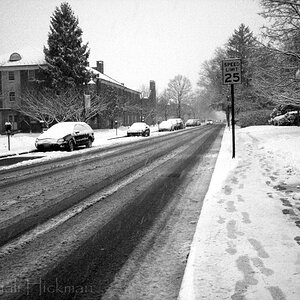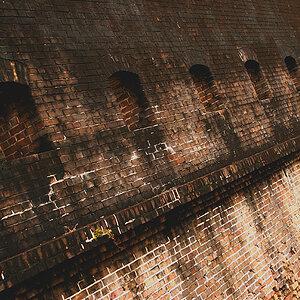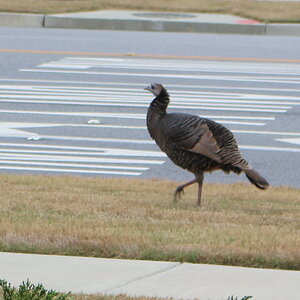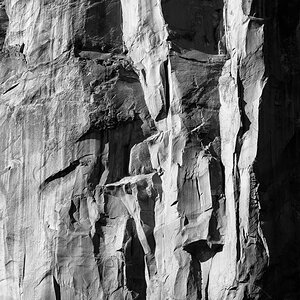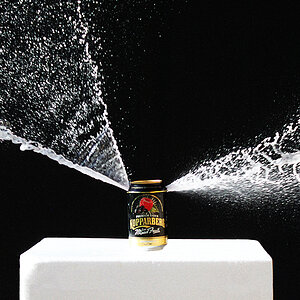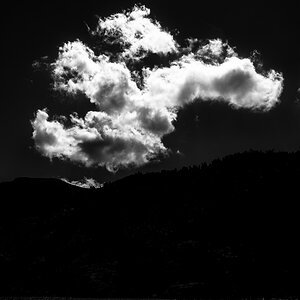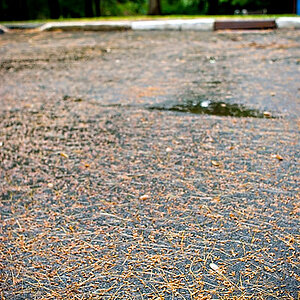W.Smith
TPF Noob!
- Joined
- Oct 11, 2006
- Messages
- 440
- Reaction score
- 0
Where did the "T" setting go?
With mechanical cameras you had a range of shutter speeds to choose from, like from 1/1,000th sec to 1 second, plus "B" (for "Bulb") and "T" (for "Time").
"B" and "T" to be used with a cable shutter release.
"B" means the shutter opens when you press the shutter button, and closes when you release it.
"T" meant the shutter opens at first shutter cable press-and-release, and closes when pressed and released a second time.
I.o.w. "B" was/is used for looong shutter times, "T" was used for very, very long shutter times.
With the "T" setting you could for instance illuminate a whole church in the dead of night, with just one flashgun: set the cam on tripod, looking down the center aisle, smallish aperture (e.g. f/8.0) and low ISO (100), open the shutter ("T"), walk around the church with your flashgun and fire it pointing 45 degrees upward to the walls/sides at evenly spaced distances. When you finished that round you went back to the camera to press the shutter cable release a second time to close the shutter.
The resulting image would show a pretty evenly lit church interior. But without you visible in it, because 1) you were never lit directly, and b) you never stayed in one spot long enough to register on the film or sensor.
This technique was affectionately called "the walking flash".
Edit: a.k.a. "painting with light".
No current consumer cameras, however, (afaik) have the "T" setting anymore. Meaning that "the walking flash" as a technique is not an option anymore.
Or does anyone know a feasible workaround?
With mechanical cameras you had a range of shutter speeds to choose from, like from 1/1,000th sec to 1 second, plus "B" (for "Bulb") and "T" (for "Time").
"B" and "T" to be used with a cable shutter release.
"B" means the shutter opens when you press the shutter button, and closes when you release it.
"T" meant the shutter opens at first shutter cable press-and-release, and closes when pressed and released a second time.
I.o.w. "B" was/is used for looong shutter times, "T" was used for very, very long shutter times.
With the "T" setting you could for instance illuminate a whole church in the dead of night, with just one flashgun: set the cam on tripod, looking down the center aisle, smallish aperture (e.g. f/8.0) and low ISO (100), open the shutter ("T"), walk around the church with your flashgun and fire it pointing 45 degrees upward to the walls/sides at evenly spaced distances. When you finished that round you went back to the camera to press the shutter cable release a second time to close the shutter.
The resulting image would show a pretty evenly lit church interior. But without you visible in it, because 1) you were never lit directly, and b) you never stayed in one spot long enough to register on the film or sensor.
This technique was affectionately called "the walking flash".
Edit: a.k.a. "painting with light".
No current consumer cameras, however, (afaik) have the "T" setting anymore. Meaning that "the walking flash" as a technique is not an option anymore.
Or does anyone know a feasible workaround?


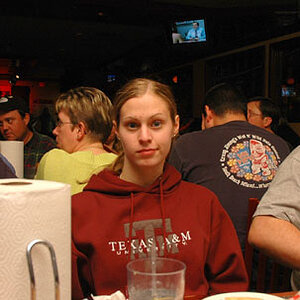
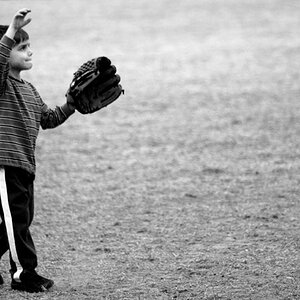
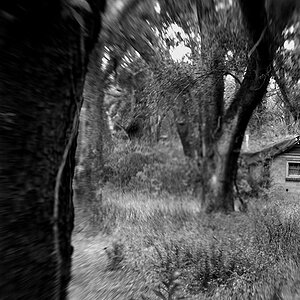
![[No title]](/data/xfmg/thumbnail/39/39290-dfb3e819bd94a7f30797638ae1ae27cf.jpg?1619738958)

